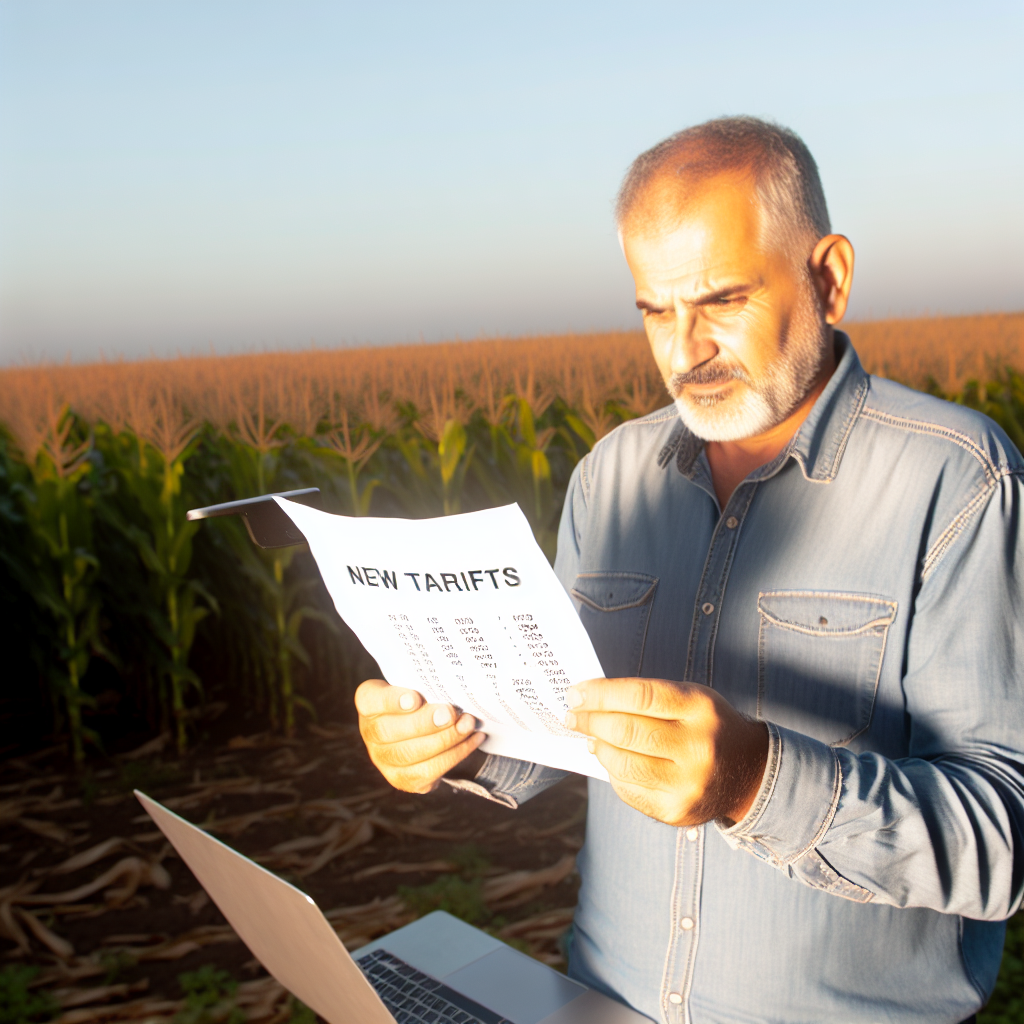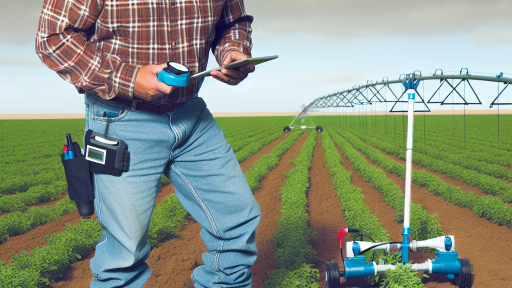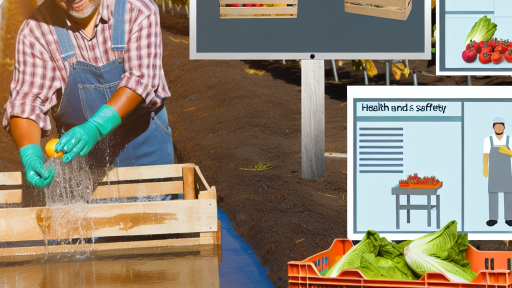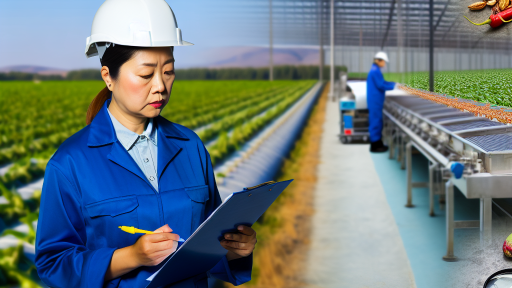Introduction to Tariffs and Their Role in Agriculture
Tariffs are taxes imposed on imported goods.
They aim to protect domestic industries from foreign competition.
In agriculture, tariffs can significantly impact farmers and producers.
Understanding tariffs is crucial for navigating market challenges.
The Basics of Tariffs
Tariffs influence pricing for international products.
Higher tariffs on imports often benefit local farmers.
Consequently, consumers may experience increased prices for some goods.
Types of Tariffs
There are various types of tariffs affecting agriculture.
Ad Valorem tariffs are based on the product’s value.
Specific tariffs charge a fixed rate per unit.
Import quotas may also limit the quantity of goods entering a country.
Effects of Tariffs on Farmers
Tariffs can protect domestic farming from cheap imports.
However, they can also lead to retaliatory measures from other nations.
Such responses may harm farm export markets.
Ultimately, many factors determine how tariffs affect individual farmers.
Transform Your Agribusiness
Unlock your farm's potential with expert advice tailored to your needs. Get actionable steps that drive real results.
Get StartedThe Role of Trade Agreements
Trade agreements can modify or reduce existing tariffs.
Free trade agreements aim to boost international trade.
They often lead to more competitive pricing for consumers.
Additionally, they can open new markets for farmers.
Strategies to Adapt to Tariff Changes
Farmers can adapt by diversifying their crops and markets.
Educating themselves about trade policies can provide an edge.
Long-term planning is essential for sustainability in this environment.
Innovative marketing strategies can also enhance competitiveness.
Overview of Recent Tariff Changes Impacting Farming Businesses
Understanding Tariff Changes
Tariff changes significantly influence the farming sector.
These adjustments can alter the cost structure for farmers.
Consequently, they can impact profit margins and pricing strategies.
Recent Developments
Recently, several countries modified their tariff policies.
For instance, Canada raised tariffs on certain agricultural products.
This decision affects U.S. producers trying to export to Canada.
Moreover, the European Union has introduced new tariffs on imports.
These increased tariffs specifically target sorghum and soybeans.
Impact on Pricing
Tariff changes lead to fluctuations in commodity prices.
Higher tariffs can cause prices to rise for consumers.
Alternatively, this situation may lower the demand for exports.
As a result, farmers might face reduced income from overseas markets.
Opportunities for Local Farmers
While tariff changes present challenges, they also offer opportunities.
Farmers can focus on domestic markets to offset losses.
By doing this, they may increase their sales within the country.
Additionally, this shift can enhance local partnerships and collaborations.
Showcase Your Farming Business
Publish your professional farming services profile on our blog for a one-time fee of $200 and reach a dedicated audience of farmers and agribusiness owners.
Publish Your ProfileStrategies for Adaptation
Farmers must develop strategies to navigate tariff changes effectively.
First, they should analyze their supply chains for vulnerabilities.
This analysis will help identify areas where costs can be reduced.
Moreover, diversifying crops can mitigate risks associated with tariffs.
Finally, staying informed about global trade developments is crucial.
How Tariff Increases Affect Input Costs for Farmers
Introduction to Tariffs and Farming
Tariffs impose additional costs on imported goods.
Farmers depend on these imports for various supplies.
The increase in tariffs directly raises their input costs.
Impact on Fertilizers and Chemicals
Many fertilizers are imported from other countries.
Higher tariffs drive up the prices of these essential inputs.
Consequently, farmers face increased operating expenses.
This directly affects their profitability and sustainability.
Effect on Machinery and Equipment
A significant portion of farming machinery comes from overseas.
Tariff hikes make these machines more expensive to purchase.
As a result, farmers may delay necessary equipment upgrades.
These delays can hinder productivity and efficiency.
Changes in Seed and Planting Material Costs
Specialty seeds often come from international suppliers.
Tariffs can inflate the costs of these seeds dramatically.
Farmers may struggle to maintain crop diversity due to this.
Higher costs can lead to reduced planting decisions.
Mitigating Increased Costs
Farmers can explore alternative suppliers to combat cost increases.
Moreover, they may invest in local resources and production.
Joining cooperatives can also provide a buffer against price hikes.
Additionally, government programs may offer financial assistance.
Long-Term Economic Implications
Increased input costs can lead to increased food prices.
Consumers may encounter higher prices at the grocery store.
This could shift purchasing habits and demand within the market.
Ultimately, it may affect food security on a larger scale.
See Related Content: Exploring the Effects of Farm-To-Table Policies on Crop Production
The Impact of Reduced Tariffs on Export Competitiveness
Overview of Tariff Reductions
Tariffs are taxes imposed on imported goods.
Reducing tariffs can promote international trade significantly.
Farmers benefit from lower tariffs as their products become more competitive abroad.
Increased Market Access
Lower tariffs enhance access to foreign markets.
Farm products can reach new customers regularly.
Farmers like Maria Gonzalez of Green Pastures Farm enjoy expanded sales opportunities.
For instance, dairy products can enter markets that were previously unfeasible.
Shift in Competitive Landscape
Reduced tariffs affect competition among farmers globally.
Local farmers must innovate to keep up with international standards.
Competitive pricing becomes essential for survival in export markets.
Furthermore, larger agribusinesses may leverage economies of scale.
Showcase Your Farming Business
Publish your professional farming services profile on our blog for a one-time fee of $200 and reach a dedicated audience of farmers and agribusiness owners.
Publish Your ProfileImpact on Pricing and Profitability
Lower tariffs can lead to reduced prices for consumers.
However, farmers must balance prices with operational costs.
Profit margins can be squeezed if lower prices are not managed properly.
Careful financial planning is critical during this transition.
Long-term Strategic Planning
Farmers must adapt to new market conditions strategically.
This includes diversifying export markets and products.
Long-term contracts can stabilize income during turbulent shifts.
Collaboration with export cooperatives also enhances bargaining power.
Monitoring Global Trade Policies
Farm businesses must stay informed about trade agreements.
Changes in policies can have rapid impacts on competitiveness.
Attending industry conferences helps farmers stay updated.
Networking with other farmers provides insights into adapting strategies.
Uncover the Details: Impact Of Pesticide Regulations On Crop Production
Case Studies: Effects of Tariff Changes on Specific Crops
Corn Production and Tariff Impacts
Corn is a staple crop in many economies.
In recent years, tariff changes significantly influenced corn markets.
For instance, during the 2018 trade disputes, U.S. corn exporters faced increased tariffs from Mexico.
As a result, many farmers had to lower their prices to remain competitive.
This directly affected their profit margins.
Additionally, competing countries gained more market access.
This increased pressure on U.S. farmers who rely heavily on exports.
Soybean Farmers and Tariff Repercussions
Tariff fluctuations have also impacted soybean growers greatly.
After China imposed tariffs on U.S. soy products, demand declined rapidly.
This left many soybean farmers with surplus stock.
Consequently, prices fell sharply, creating financial strain.
Farmers like Maria Jenkins in Iowa reported losses nearly doubling her operating costs.
Many sought alternative markets but faced challenges.
Global competition intensified, complicating their recovery efforts.
Wheat Cultivation and Market Changes
Wheat is another crucial crop affected by tariff shifts.
European tariffs on U.S. wheat led to decreased sales opportunities.
Farmers, such as Peter Thompson in Kansas, struggled to find buyers.
To adapt, some explored local markets for support.
This, however, reduced their profit potential.
Furthermore, unpredictable pricing discouraged new investments in this sector.
The aftermath created uncertainty in future planting decisions.
Dairy and Livestock Sectors Under Threat
The dairy sector is not immune to tariff effects either.
Tariffs have limited exports, particularly to Canada.
Farmers like Lisa Reynolds faced a significant drop in demand.
This led to surplus dairy products and unsold inventory.
Many attempted price cuts, but profitability remained elusive.
Hence, some dairy farms considered downsizing operations.
Showcase Your Farming Business
Publish your professional farming services profile on our blog for a one-time fee of $200 and reach a dedicated audience of farmers and agribusiness owners.
Publish Your ProfileThis cycle further destabilized the market.
Fruit and Vegetable Producers Affected by Tariffs
Fruits and vegetables also bear the brunt of tariff adjustments.
In particular, citrus growers noticed immediate impacts.
When tariffs on imports rose, their competitive pricing changed.
Farmers increased production to compensate for lost income.
This surge, however, led to market saturation.
Consequently, many experienced plummeting prices.
Fruits such as oranges and avocados faced the greatest declines.
Uncover the Details: Navigating Environmental Regulations in Farming

Strategies for Farmers to Mitigate Risks Associated with Tariff Changes
Understanding the Impact of Tariff Changes
Tariff changes can significantly affect farming businesses.
They alter commodity prices and market access.
Consequently, farmers must be proactive in their strategies.
Diversifying Your Crop Portfolio
Diversification can reduce reliance on specific crops.
Planting a variety of crops helps buffer against price fluctuations.
Additionally, this strategy attracts different market opportunities.
- Consider new crops that are in demand.
- Research regional markets for niche products.
- Engage in crop rotation to improve soil health.
Enhancing Your Supply Chain Management
Streamlining supply chain operations can boost efficiency.
Minimizing waste reduces costs, which is crucial during tariff hikes.
Moreover, strong relationships with suppliers ensure better pricing.
- Negotiate contracts based on stable pricing.
- Explore local sourcing to lower transportation costs.
- Assess logistics for efficient distribution.
Building Strong Relationships with Buyers
Establishing reliable buyer relationships is essential.
Contracts safeguard against sudden price changes.
Furthermore, consistent communication fosters trust and loyalty.
- Attend trade shows to meet potential buyers.
- Utilize online platforms to reach broader audiences.
- Engage in cooperative marketing with other farmers.
Investing in Innovation and Technology
Technology helps farmers stay competitive in a changing market.
Precision agriculture optimizes resource use and increases yields.
Additionally, farm management software aids in decision-making.
- Explore drone technology for monitoring crops.
- Implement data analytics for better crop planning.
- Consider automation to lower labor costs.
Staying Informed on Policy Changes
Keeping abreast of trade policies is crucial for farmers.
Awareness helps in anticipating market shifts.
Moreover, engaging with agricultural associations provides insights.
- Subscribe to industry news and updates.
- Participate in workshops and seminars.
- Advocate for farmer interests within policy discussions.
See Related Content: How Food Safety Regulations Impact Agricultural Production
The Role of Government Subsidies in Offset Tariff Impacts
Understanding Government Subsidies
Government subsidies are financial aids granted to farmers.
These subsidies support agricultural production and help stabilize the market.
They can reduce overall production costs for farmers.
Consequently, farmers can maintain pricing competitiveness.
Mitigating Tariff Effects
Changes in tariffs can significantly impact farming businesses.
Increased tariffs often lead to higher costs for imported farming goods.
Government subsidies help offset these rising costs.
Farmers can receive funds or tax breaks to retain profitability.
Types of Subsidies Available
Several types of subsidies are available to farmers today.
- Direct payments offer farmers a fixed income support.
- Price supports ensure farmers receive a minimum price.
- Crop insurance aids in managing risks from bad weather.
Each type serves to protect farmers from market fluctuations.
The Impact on Different Farming Sectors
Different farming sectors experience varied effects from tariffs.
Crops such as soybeans often see significant changes in demand.
Showcase Your Farming Business
Publish your professional farming services profile on our blog for a one-time fee of $200 and reach a dedicated audience of farmers and agribusiness owners.
Publish Your ProfileDairy farmers may benefit from subsidies during trade disputes.
Livestock producers also rely heavily on government support.
Future Implications for Farmers
Looking ahead, government policies will shape agricultural strategies.
Farmers should stay informed about potential subsidy changes.
Adapting to these changes is essential for long-term success.
Furthermore, proactive approaches can enhance their market position.
Future Predictions: How Ongoing Trade Negotiations May Influence Farming
The Impact of Tariff Changes
Tariff changes significantly affect farmers’ costs and profits.
When tariffs increase, farmers may face higher costs for imported supplies.
As a result, profit margins can shrink, impacting overall sustainability.
Conversely, lower tariffs can lead to reduced prices for consumers.
This shift may boost demand for certain agricultural products.
Market Dynamics and Changes
Tariff negotiations also reshape market dynamics.
Countries involved in trade disputes often experience fluctuating prices.
Farmers must adapt to these sudden market changes to remain competitive.
Producers of specialty crops may particularly feel these impacts.
Effect on Export Opportunities
Trade negotiations determine export markets for U.S. farmers.
Higher tariffs can close off international buyers for certain goods.
In contrast, favorable agreements might open new markets abroad.
Farmers like Maria Lopez can benefit from expanded export options.
Adaptation Strategies for Farmers
Farmers need to develop strategies to navigate these changes.
- Diversifying crops can reduce dependency on a single market.
- Investing in value-added products can provide higher returns.
- Building relationships with local suppliers may mitigate imported costs.
Future Trends in Agricultural Policy
Future agricultural policies may prioritize sustainable practices.
Policies that support local farmers could gain traction.
Farmers should stay informed about potential regulatory changes.
Engagement in community discussions can amplify their voices in trade talks.
Additional Resources
Four ways Trump could impact the agriculture sector during second …




